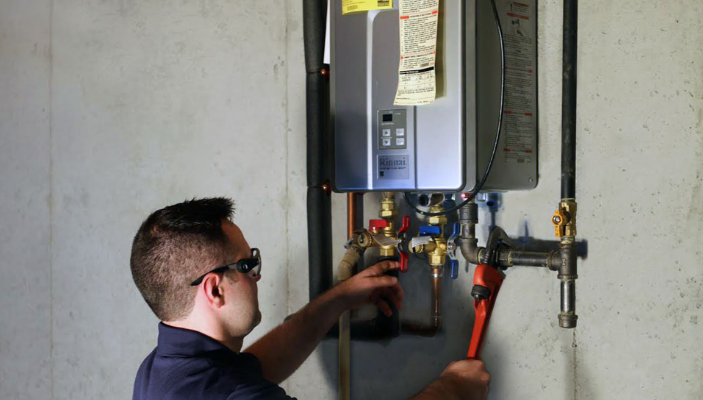Tips on How to Keep Your Home's Hot Water System in Good Condition
Tips on How to Keep Your Home's Hot Water System in Good Condition
Blog Article
Just how do you really feel about Tips For Maintaining Your Hot Water Heater?

Warm water is vital for daily convenience, whether it's for a revitalizing shower or washing dishes. To guarantee your warm water system runs effectively and lasts longer, normal upkeep is essential. This article gives sensible ideas and insights on just how to preserve your home's hot water system to stay clear of interruptions and costly repairs.
Intro
Maintaining your home's warm water system may appear complicated, but with a couple of straightforward steps, you can guarantee it operates efficiently for many years to come. This overview covers everything from understanding your warm water system to do it yourself maintenance tips and knowing when to contact expert help.
Value of Keeping Your Hot Water System
Routine upkeep not only extends the life expectancy of your warm water system but likewise guarantees it operates effectively. Disregarding upkeep can result in decreased performance, higher energy expenses, and also premature failure of the system.
Indicators Your Hot Water System Requirements Maintenance
Recognizing when your hot water system needs focus can prevent major concerns. Look out for indicators such as irregular water temperature, odd sounds from the heater, or rustic water.
Recognizing Your Warm Water System
Before diving right into upkeep tasks, it's valuable to recognize the standard components of your warm water system. Typically, this includes the water heater itself, pipelines, anode poles, and temperature level controls.
Monthly Upkeep Tasks
Normal month-to-month checks can aid capture minor issues before they escalate.
Purging the Hot Water Heater
Purging your hot water heater gets rid of debris build-up, improving efficiency and lengthening its life.
Monitoring and Changing Anode Rods
Anode poles protect against deterioration inside the tank. Inspecting and replacing them when worn is important.
Checking and Changing Temperature Settings
Adjusting the temperature settings guarantees ideal performance and safety.
DIY Tips for Upkeep
You can execute numerous upkeep jobs on your own to keep your hot water system in top problem.
Looking for Leakages
On a regular basis examine pipelines and links for leakages, as these can result in water damage and higher costs.
Testing Pressure Alleviation Valves
Checking the pressure relief valve guarantees it operates properly and stops extreme pressure build-up.
Protecting Pipes
Insulating warm water pipes minimizes heat loss and can conserve power.
When to Call an Expert
While DIY upkeep is helpful, some problems call for expert knowledge.
Complex Concerns Needing Professional Assistance
Instances consist of major leakages, electric problems, or if your hot water heater is regularly underperforming.
Routine Specialist Upkeep Benefits
Specialist maintenance can consist of extensive inspections, tune-ups, and making certain conformity with safety criteria.
Final thought
Normal maintenance of your home's warm water system is vital for performance, long life, and expense financial savings. By complying with these tips and understanding when to seek expert aid, you can make certain a reputable supply of warm water without unforeseen disturbances.
How to Maintain an Instant Hot Water Heater
Before tinkering with your hot water heater, make sure that it’s not powered on. You also have to turn off the main circuit breaker and shut off the main gas line to prevent accidents. Also turn off the water valves connected to your unit to prevent water from flowing into and out of the appliance. 2. When you’re done, you have to detach the purge valves’ caps. These look like the letter “T†and are situated on either side of the water valves. Doing so will release any pressure that has accumulated inside the valves while at the same time avoid hot water from shooting out and burning your skin. 3. When the purge valves’ caps are removed, you have to connect your hosing lines to the valves. Your unit should have come with three hoses but if it didn’t, you can purchase these things from any hardware or home repair shops. You can also get them from retail stores that sell water heating systems. Read the user’s manual and follow it to complete this task properly. When the hosing lines are connected, open the purge port’s valves. 4. You should never use harsh chemical cleaners or solutions when cleaning your unit. Make use of white vinegar instead. It should be undiluted and you’ll probably use about 2 gallons. 5. Now flush your water heater. This task should probably take about 40 minutes. We can’t give you specific directions for this because the procedure is carried out depending on the type, model and brand of your heater. With that being said, refer to the user’s manual. 6. When you’re done draining the unit, you have to turn off the purge port valves again. Remove the hosing lines that you earlier installed on each of the water valves. Put the valve caps (purge port) back in their respective places and be very careful so as not to damage the rubber discs that are found inside these caps. 7. Now that everything’s back in place, check your user’s manual again to find out how to reactivate your water heating system. 8. Once it is working, turn one of your hot water faucets on just to let air pass through the heater’s water supply pipes. Leave the tap on until water flows smoothly out of it. https://www.orrplumbing.com/blog/2014/september/how-to-maintain-an-instant-hot-water-heater/

We had been made aware of that write-up on How to Maintain a Hot Water Heater in a Few Simple Steps through a buddy on another website. Appreciated our blog posting? Please share it. Let somebody else find it. Thanks a lot for being here. Please visit our website back soon.
Show Details Report this page